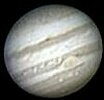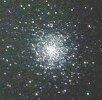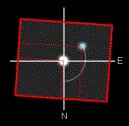The webcam in astronomy acquired its
letters of nobility with the planetary imagery.



It is pretty and that can be useful ...
At the cost of some
modifications of electronics, it is possible to reach a little deep
sky.



That is not necessarily useful but it is very funny ...
What is less known is that modified or not, a
webcam permits to get very good images of double stars.
It is funny, it is pretty and that maybe useful ... at a condition : measure
them.
![]()
![]()


The observers who tried to make double stars
measurements know how much this activity
is demanding and sometimes frustrating whith amateur means :
- Calibration never easy
- Cost of a micrometer
- Results not always in respect with the personal and financial
investment
Well, take a look at this living star
![]()
The pictures are acquired with an amateur 8" telescope and a 50$
webcam.
When you know that this couple is separated by about 1"6, it seems obvious
that there is something to do ...
What are we looking for when
measuring ?
 The position angle of the secondary star in relation to the main component |
 The angular separation between the components |
We will meet two problems at the time of reduction :
 We need to find the image orientation that depends of the orientation of the camera at the time of the shot |
 The determination of their scale (sampling) that depends of the focal distance of the instrument |

A camera fixed at the focus
plane of a long focal distance instrument,
mounted on a permanent pier and with perfectly known instrumental constants
seems ok but ... everybody doesn't have that in his garden!
Alas, the amateurs instruments
rather look like that



Rarely in a permanent mount, some
having even the troublesome tendency to possess a focal distance
that is dependant of focusing (Schmidt-Cassegrain) !
Fortunately, thanks to its easiness of setting, the webcam allows
us to calibrate our instrumentation very quickly at every session
while using a list of standard stars.
It is one of the big advantages in relation to the classical
systems that generally require long sessions of calibration.
Here, we can take the liberty to change optic combination from a
session to the other.